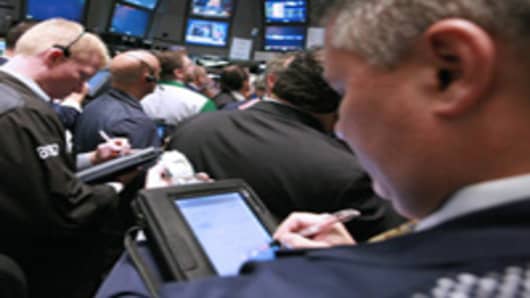"We need to constantly make sure that our market gives people the confidence to invest," said Larry Leibowitz, COO of NYSE Euronext.
That confidence was shaken by the Flash Crash of May 6, 2010. The sudden 600 point decline in the Dow Jones Industrial Average raised questions about the market's stability. It also put high-frequency traders in the spotlight. The increased scrutiny is largely due to concerns about the stability of the liquidity they provide, and criticisms they inhibit, rather than help, price discovery in the market.
Securities & Exchange Commission Chairwoman Mary Schapiro touched on this during a speech to the Economic Club of New York. "I believe the rules that govern our equity market structure more broadly need to keep up with the changes in the market," she said.
Among the changes in the market over the last fifteen years, the growth of ECNs, what are basically electronic venues to buy and sell stock. They were introduced to cut trading costs.
Add to that decimalization, or the narrowing of the spread to a penny, of the bid and ask price of a share of stock. Mix in new technology to speed the trades and you have a new breed of trader that makes money not buying or selling stock based on metrics like book value and PE ratios but computer programs written to detect, and exploit, changes in price patterns in stocks.
The trader makes money buying amounts of stock then selling them quickly. The price differential may be in the pennies but the profits can add up to the millions if enough shares are traded. This is what high-frequency traders do, both independent companies and desks run by big institutions like banks. And while they are being criticized now, points out their presence is beneficial to the markets and other investors.
"Our volume is higher than its ever been." he said. "Commissions that hedge funds, and mutual funds and investors pay are far lower than they've ever been," said Leibowitz, who added he believes the issue isn't really high-frequency traders but a market structure in need of a new rule book.
"We've had market makers on this planet for 400 years," he said. "They have always traded according to patterns in the stock and liquidity in the stock. There's actually no conflict here at all. It's always existed this way. We just need to make sure that the rules are there and more transparent."
Leibowitz says he's not an apologist for high-frequency traders. He sees them as part of the natural evolution of technology that makes some people uncomfortable. The New York Stock Exchange, he notes, has had to adjust too. The changes in market structure and growth of high-frequency trading have contributed to the steep decline in its share of trading volume—from more than 80 percent of all listed trades to about a quarter of them.
The number of market makers on the NYSE floor has dwindled to the single digits. The narrowing of spreads has made it difficult for them to make a profit. As a result, many were sold to banks like Goldman Sachs , or closed shop. In their wake high frequency-traders have filled the void, providing liquidity to the markets. In return, they are given rebates by the exchanges.
"We actually pay them to provide liquidity because what helps create market quality is more liquidity, tighter spreads," said Leibowitz. "Its good for market quality, that's good for speed of execution, that's good for volume."




